Shower drain: design and installation features
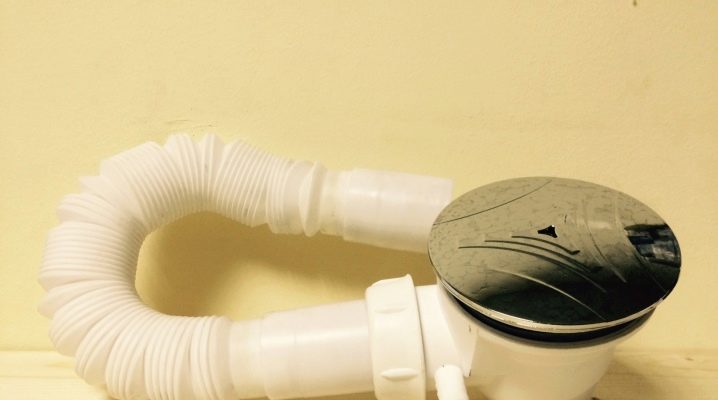
The arrangement of the shower stall drain is important, since without this there will be no comfort when taking water procedures. Improper installation of the drain will cause water leakage.


Features of the device
Provide a place in advance and select an option for a liquid drainage system.
If it is assumed that the shower room will be equipped with a tray, there can be two options:
- ladders;
- channels.


In showers without trays, drain drains are more often used, which are arranged below floor level. A feature of the system is the mandatory presence of a lattice platform, under it there is a drain hole. A drainage mechanism is mounted inside the drain hole. It is needed so that the drains do not go back into the shower, otherwise stagnation and an unpleasant odor will form.

To completely eliminate such problems, the shower floor is mounted with a slope towards the drain valve. It is important to think over the placement correctly, since if the grill is installed in the center of the shower, then the floor should be tilted in 4 planes, and if the drain valve is placed in the corner, then you can do it by tilting one or two planes.
The ladder looks like a prefabricated system, which includes:
- the ladder itself;
- siphon;
- gaskets and seals;
- water seal.




The shower channel is an elongated rectangular body consisting of a grill with a drainage channel and drain. The direct purpose of the species is to drain the drains from the shower into the sewer. On sale you can see gratings of various shapes from different materials. Configurations can be selected according to the needs and financial capabilities.
The shower channel is installed at the door to the bathroom or close to the wall. The base must be tilted to one side (depending on the location chosen for the channel). A properly installed channel ensures good drainage, otherwise water may overflow, which can then get under the tile.


Modern mechanisms are capable of passing up to 20 liters per minute. Standard materials for the manufacture of channels are plastic or stainless steel. Such drain systems are sold as parts or as a complete set. The choices are flexible enough.
The choice of installation schemes can take into account the location of the existing sewer distribution, as well as take into account the height of the shower base. Depending on the existing scheme, one or another equipment is purchased. Consider the types for cabins with and without a pallet.


Criterias of choice
Pallet fences are numerous variations that are found in large numbers in retail outlets. The drainage scheme is simple: through the brass hole at the bottom. The arrangement of such a system is convenient. It does not require preliminary preparation of the floor.
Palletless fences are common in public washrooms and saunas, but more recently in home bathrooms. The role of drainage in such showers is played by special holes in the floor, which are recessed below the floor level at the stage of its installation.
There are many engineering systems in modern stores, sometimes the line between types is blurred, and confusion arises in definitions. To clarify the features of devices and installation, it is worth disassembling in more detail the systems for different showers
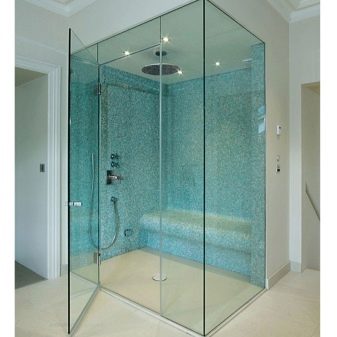

The main part of the systems is a siphon. The main purpose of this part is to protect the sewer pipes from clogging.Siphon classifications are interrelated with the height of the product and the diameter of the outlet.

Systems are bottle-type and knee-type. As a basis for production, stainless steel, cast iron and plastic are used.
Different siphon designs have different flow rates. If you choose a device with reduced rates, determined by the volume of water, then you can fill the entire floor while taking a shower. To avoid troubles, it is advisable to calculate the volume of consumed liquid even before purchasing the device.
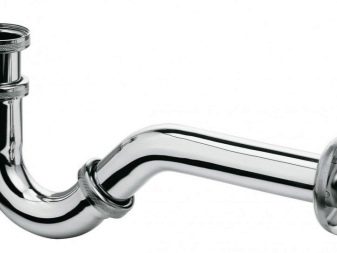

Particular care should be taken if construction details are not purchased as a kit. Individual parts and holes must match.
Regardless of the choice of a particular system, you, in addition to siphons, will need:
- plastic sewer pipes;
- sealant;
- tools for work


Now more about the types of siphons.
- Users could see the bottle-type variant on sinks and sinks, here it is the main view. This siphon is good for a booth with a pallet. The shape of the system resembles a bottle connected to a drain. A connecting pipe is output from the side, which is directed to the sewer drain. The lower part of the structure is a screw cap that removes any dirt that gets in. The system is easy to set up and further clean.


- The knee version siphon looks like a tube (curved S or U). The bend is supported by cable ties. The main advantage is low height. However, cleaning the device becomes much more difficult, especially if the element is corrugated.


However, such a part is convenient to install, since the bend can be laid absolutely anywhere and at any slope. The corrugated pipe is often used to drain wastewater from a shower enclosure. Due to its elasticity, it is possible to embody an external beautiful water outflow system.


Assembly and installation
As described above, a simpler installation is a shower tray system.
Turn the base over and secure the joints between the structure and the drainage channel. Carry out the installation of the system and secure it all with the system tools. Make sure that the base is above the bottom edge of the system. Turn the base over and equip it in place. Adjust the feet for height. There should be a difference of about five degrees between the height of the drain in the siphon and the sewer drain.


You can connect the drain: install the mesh and protect the edges with sealant. Install the tee by connecting the curved pipe to the nipple using spacers. If necessary, mount a special valve, here it can be replaced with a "drain-overflow" system (choose at your discretion).


If it is not planned to install a pallet in the shower, then the bathroom floor will play its role. To do this, it initially fits at the desired angle, so the existing base will have to be disassembled. A canal drainage system is installed directly into the floor. Fix it on all sides with a cement mortar. To prevent damage to the polished surface, cover the channel grating with construction tape.


Fix the duct with special brackets to the base of the floor. If the tray body is metal, ground it. There are adjusters on the sides of the case, with which you can level the device according to the horizontal level. Pay special attention to tightening the nuts: loosely tightened nuts will then be impossible to adjust or remove. The mechanism will be cemented at the height of the floor.
Take the connecting hose and attach it to the nipple. The other end of the connection must be arranged to the tube. Make sure the hose is firmly seated. To prevent leakage, you can treat the branch pipe with a thin layer of silicone.


Next, fill in the space left on the sides of the canal with cement. Consider the thickness of the finishing material to be laid on top.Ceramic tiles can act as the base of the shower (they can be changed to any other waterproof material).
To prevent runoff from accumulating at the channel, the top of the tile should be slightly higher than the channel. When installing a fence without a base, lay the tiles from the structure. The joint with it should turn out to be perfectly even, and sharp edges should be absent altogether. For better drainage, you need to make a straight slope to the drain, which should be 1-1.5 cm per 1 m of the length of the entire base.
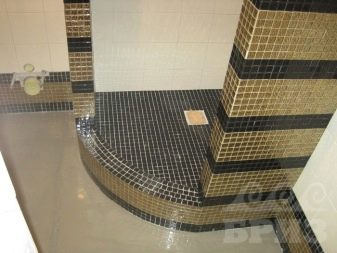
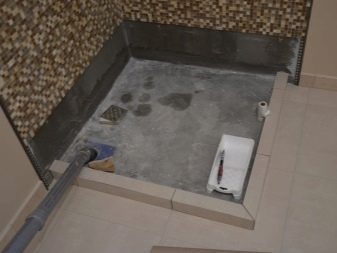
After tiling, clean the edges of the structure and fill them with sealant. The protective tape from the structure can be removed only after the sealed layer has completely dried.
The installation of the shower drain is similar to the steps for arranging the previous design. Ladder systems are cheaper than ducts, but they are sold without locking mechanisms. Therefore, you should take into account the installation diagrams and features.


The appearance of this drainage mechanism resembles a simple body with internal details: a button or a valve and a drainage system. The device requires an initial rigid installation at the desired level. Installation in height will be provided by ordinary bricks placed under the structure. Multiple tiles or other suitable materials will also work. It is more difficult to adjust the horizontal position here.


Control of the location of the drain structure is possible only after the screed is poured from cement mortar (while it dries). Compulsory waterproofing is laid on the screed, and after that - the finishing coat. After complete installation and some time of use, the internal parts of the device can be easily disassembled. The drain pipe can only be cleaned with a special cable.


Helpful hints
Before purchasing a siphon, measure the gap between the sump outlet valve and the floor. The structure must fit under the pallet.

Make sure the sump valve is sized to match the neck width of the system. Standard dimensions vary: 52, 62, 90 mm
Pay particular attention to the drainage debris system in the low base of the shower enclosure.


When arranging a channel system, consider some features.
- The flow capacity of the channel should not be less than the water flow in the shower. For example, a conventional hydromassage consumes 10 liters of water per minute.
- Take into account the location of the tray from the branch pipe, as well as to the sewer pipe. The smaller it is, the better.
- Check the system throughput if in doubt. Try to fasten the structure to the base and pipe and give it water under pressure.
- Take into account the diameter of the hose that extends from the nozzle. It should not be less than 40 mm. Its slope should be 30 mm by 1 m.
- To provide better access to the structure (for cleaning it), choose the sectional option. It is mounted at the door of the room.
- Consult with professionals and (only if you have confidence in your own abilities) proceed with the installation of the system.

For information on how to assemble a shower stall, see the video below.













The comment was sent successfully.